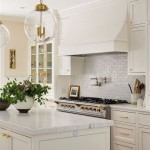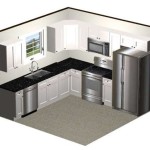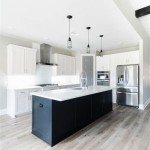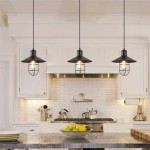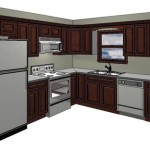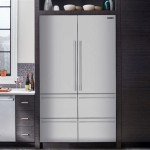Led Pendant Lighting For Kitchen Island: Illumination and Style
The kitchen island has evolved from a simple workspace to the central hub of the modern home. It serves as a prep area, dining spot, homework station, and gathering place for family and friends. Consequently, proper lighting is crucial to enhance its functionality and aesthetic appeal. LED pendant lighting for kitchen islands offers a versatile and energy-efficient solution, combining focused task lighting with decorative elements to create a welcoming and functional space.
Selecting the right LED pendant lighting involves considering several factors, including the size of the island, the height of the ceiling, the overall kitchen design, and the desired level of illumination. Understanding these elements is paramount for achieving optimal lighting performance and visual coherence.
Understanding the Benefits of LED Technology
LED (Light Emitting Diode) technology has revolutionized the lighting industry due to its numerous advantages over traditional incandescent and fluorescent lighting. These benefits are particularly relevant when considering lighting solutions for high-use areas like the kitchen island.
One of the primary advantages of LED lighting is its energy efficiency. LEDs consume significantly less power than traditional bulbs to produce the same amount of light, resulting in lower electricity bills. This efficiency is especially important for kitchen island lighting, which is often used for extended periods.
Another key benefit is the long lifespan of LED bulbs. LEDs can last for tens of thousands of hours, reducing the frequency of bulb replacements. This longevity translates to lower maintenance costs and less hassle for homeowners. Furthermore, LEDs are more durable than traditional bulbs, making them less susceptible to breakage.
LEDs offer superior light quality. They produce a bright, clean light that accurately renders colors. This is particularly important in the kitchen where accurate color representation is essential for food preparation and presentation. LEDs are also available in a wide range of color temperatures, allowing homeowners to customize the lighting to suit their preferences and the overall kitchen ambiance. From warm, inviting tones to cool, bright light, LEDs offer versatility in creating the desired atmosphere.
Finally, LEDs are environmentally friendly. They do not contain harmful substances such as mercury, which is found in some fluorescent bulbs. They also generate less heat than incandescent bulbs, further contributing to energy savings and reducing the strain on cooling systems.
Choosing the Right Style and Design
The aesthetic appeal of pendant lighting is just as important as its functional capabilities. Pendant lights serve as a focal point in the kitchen, contributing significantly to the overall design aesthetic. Selecting the right style, finish, and number of pendants requires careful consideration of the kitchen’s existing décor and the desired ambiance.
Numerous styles of LED pendant lights are available, ranging from minimalist and modern designs to rustic and traditional options. Modern pendants often feature clean lines, simple geometric shapes, and metallic finishes such as brushed nickel or stainless steel. These designs complement contemporary kitchens with their sleek and understated elegance.
Rustic pendant lights, on the other hand, often incorporate natural materials such as wood, iron, or glass. These designs evoke a sense of warmth and character, making them suitable for farmhouse or country-style kitchens. Vintage-inspired pendants with Edison-style LED bulbs can add a touch of nostalgia and charm to the space.
For a more glamorous look, consider pendant lights with crystal accents or ornate details. These designs can create a dramatic focal point and add a touch of luxury to the kitchen. Glass pendant lights, available in various shapes and colors, can also add visual interest and create a sense of openness.
The finish of the pendant lights should complement the other hardware and fixtures in the kitchen. Matching the finish of the pendant lights to the cabinet hardware, faucet, and appliances creates a cohesive and unified look. Consider the existing color scheme of the kitchen and choose pendant lights that either blend in or provide a contrasting accent color.
The number of pendants needed for a kitchen island depends on the size of the island. A general rule of thumb is to space the pendants evenly along the length of the island, leaving sufficient space between each pendant and the edges of the island. For smaller islands, one or two pendants may suffice, while larger islands may require three or more pendants to provide adequate illumination and visual balance. The size of the pendants themselves also influences the number required. Larger pendants can often be used individually, while smaller pendants are frequently installed in groupings.
Installation and Placement Considerations
Proper installation and placement of LED pendant lighting is crucial for achieving optimal lighting performance and ensuring safety. Incorrect installation can lead to inadequate illumination, glare, and even electrical hazards. Therefore, it's essential to follow best practices and, if necessary, consult with a qualified electrician.
The height at which the pendant lights are hung is a critical factor. The bottom of the pendant should typically be positioned approximately 30 to 36 inches above the island countertop. This height allows for adequate task lighting without obstructing views or creating glare. However, the optimal height may vary depending on the height of the ceiling and the specific design of the pendant lights. For kitchens with high ceilings, the pendants can be hung slightly higher, while for kitchens with low ceilings, it may be necessary to hang them lower.
The spacing between the pendants is another important consideration. As mentioned earlier, the pendants should be evenly spaced along the length of the island to ensure uniform illumination. The distance between each pendant should be approximately equal to the diameter of the pendant. This spacing prevents dark spots and ensures that the entire island surface is adequately lit.
Wiring and electrical connections should be handled with care. Before starting any electrical work, it's essential to turn off the power to the circuit breaker that controls the kitchen lighting. If you are not comfortable working with electrical wiring, it's best to hire a qualified electrician to install the pendant lights. Ensure that the wiring is properly grounded and that all connections are secure to prevent electrical hazards.
Consider the placement of any existing recessed lighting in the kitchen. If the kitchen already has recessed lighting, the pendant lights should be positioned to complement the existing lighting scheme. Avoid placing the pendant lights directly beneath recessed lights, as this can create excessive glare and reduce the effectiveness of both lighting sources. Instead, position the pendant lights to fill in any gaps in the lighting coverage and provide targeted task lighting for the island.
Dimmable LED pendant lights offer added flexibility and control over the lighting levels. Installing a dimmer switch allows you to adjust the brightness of the pendant lights to suit the mood and activity. During food preparation, you can increase the brightness for optimal task lighting, while during dining or socializing, you can dim the lights to create a more relaxed and intimate atmosphere. Ensure that the LED bulbs are compatible with the dimmer switch to avoid flickering or other performance issues.
By carefully considering these installation and placement factors, you can ensure that your LED pendant lighting not only enhances the functionality of your kitchen island but also contributes to the overall aesthetic appeal of your kitchen.
In conclusion, selecting LED pendant lighting for a kitchen island is a multi-faceted process that requires careful consideration of various factors. From understanding the benefits of LED technology and choosing the right style and design to proper installation and placement, each step is crucial for achieving optimal lighting performance and creating a functional and aesthetically pleasing kitchen space. By prioritizing both form and function, homeowners can transform their kitchen island into the heart of their home.

Modern 2 Light Wavy Li Led Pendant Lamp For Kitchen Island Gold

Glowlings 2 Light 48 Wide Modern Spiral Li Led Pendant For Kitchen Island

1 Light Kitchen Island Modern Li Led Pendant Homary

Led 6 Watt 1 Light Kitchen Island Black Mini Pendant With Bubble Crystal Cylinder 3000k Warm 3 Pack

Okeli Black Pendant Lights Kitchen Island Modern Unique Adjustable Focus 1 Pack

Simple Chandelier Pendant Lighting Kitchen Island Tomax

Okeli Led Bubble Crystal Kitchen Island Chrome Mini Pendant Lights 3 Pack

Glowlings 2 Light 48 Wide Modern Spiral Li Led Pendant For Kitchen Island

Savonnerie 1 Light Modern Globe Glass Led Pendant Lights Kitchen Island For Dining Room Frame Brass Painted Walmart Com
Nordic Led Pendant Light Kitchen Island Design Lampu Hiasan Gantung Lighting Chandeliers Ceiling Shopee Malaysia


